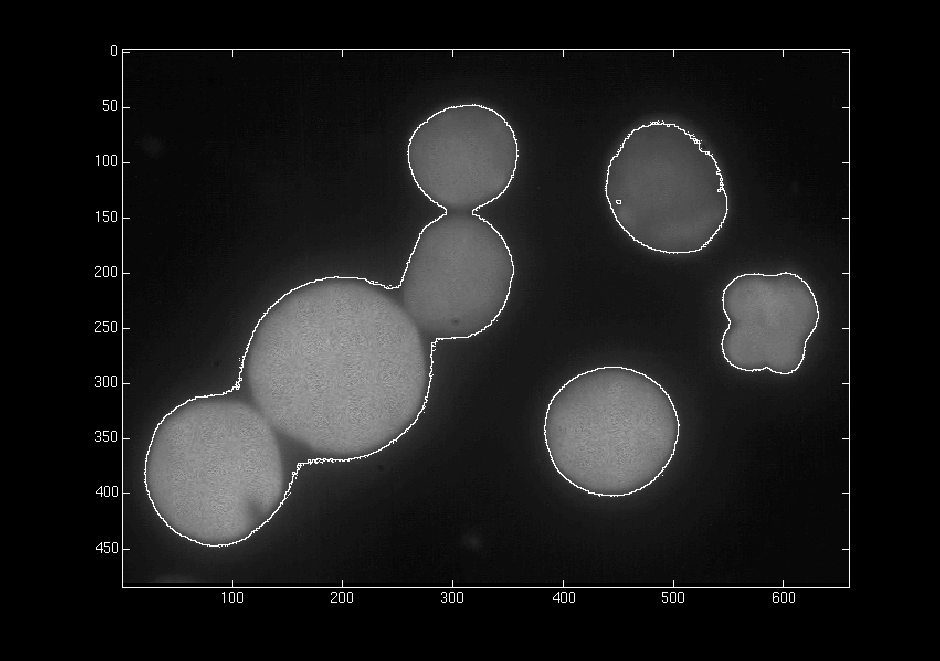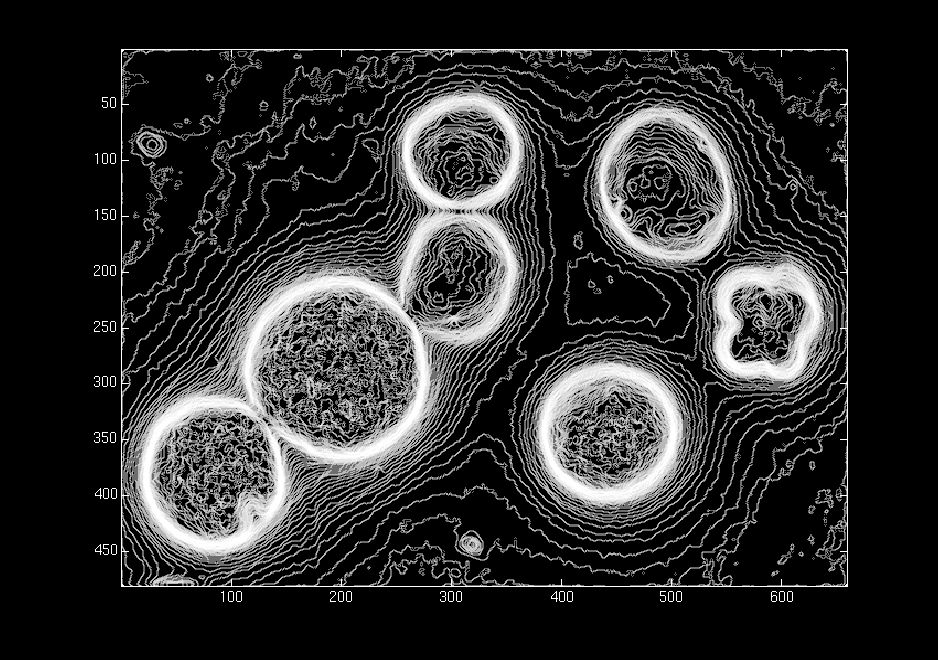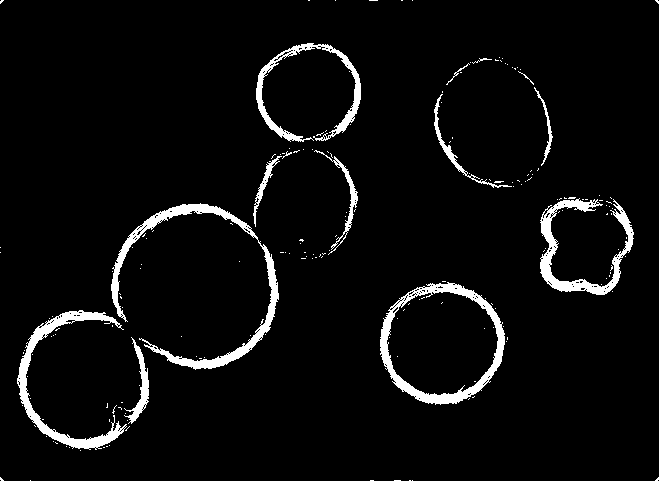
Membership Criteria |
This phase of the project was the least labor-intensive, but required the most analysis and insight. We refined a simple membership criterion used in Step 1 to use a combination of both gradient and intensity properties.
We started by making a few assumptions about our images.
Unfortunately, different regions have different mean intensity values, although they all fit the two assumptions above. Thus, we used the mean value of all the points on the edges of all the regions of interest.
We needed to develop some mechanism for computing the intensity threshold for the images. The need exists due to the variation in mean intensity values in the regions of interest. The two figures below show the effects of arbitrarily picking a threshold intensity value.
The first figure shows the result of picking a high threshold. Only the regions with the highest intensity were grown.

The second figure shows the result of picking a low threshold. Regions begin to merge and lose their definition.

We thus need to examine points on the edges of the regions of interest.
To find all the points on the edges of regions, we examined the places in the image where the gradient was highest. The figure below shows the computed gradient of the sample image.

As can be seen, the region has some texture, and there is also some camera noise, so we have to perform some low-pass filtering on the image before we find the gradient. The filter smooths out noise while keeping the edges relatively sharp, so the gradient of the smoothed image will be large only around the edges of objects.
The figure below shows the result of thresholding the gradient of the smoothed sample image.

The points from which to start growing the region are chosen close to the center of the object. Thus, the gradient should be fairly low for the first few sets of pixels encountered. As we near the edge, the gradient gets large. But since the "edges" found by the gradient are fairly thick, we want to include as much of them as possible.
Thus as we build up the region, we keep track of some statistics of the region, namely the mean and standard deviation. When we come to a point with high gradient, we check to see if the point's intensity lies above the difference between the mean and the standard deviation (mean - std). We want to give these high gradient points more of a chance since we found our approximate intensity threshold by averaging over the edges of all the objects in the picture (the different objects could have different mean intensities).
After much experimentation, analysis, and thought, we decided that the best method was to add a pixel to a region if it qualified for the region through either of two different criteria:
After each pixel is added to the region, simply re-compute the statistics (mean and standard deviation) of the region.